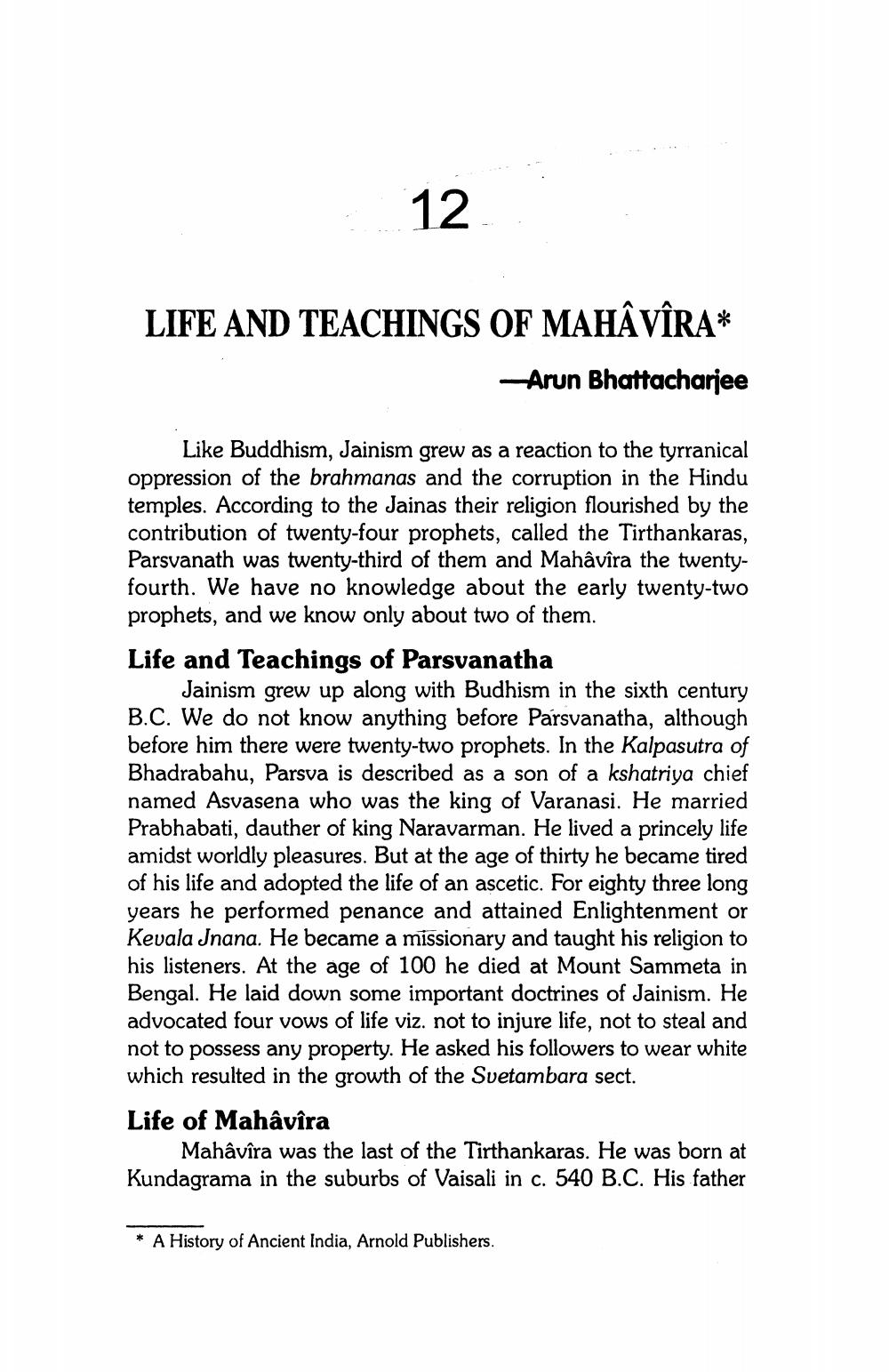________________
12..
LIFE AND TEACHINGS OF MAHAVIRA*
- Arun Bhattacharjee
Like Buddhism, Jainism grew as a reaction to the tyrranical oppression of the brahmanas and the corruption in the Hindu temples. According to the Jainas their religion flourished by the contribution of twenty-four prophets, called the Tirthankaras Parsvanath was twenty-third of them and Mahâvîra the twentyfourth. We have no knowledge about the early twenty-two prophets, and we know only about two of them. Life and Teachings of Parsvanatha
Jainism grew up along with Budhism in the sixth century B.C. We do not know anything before Parsvanatha, although before him there were twenty-two prophets. In the Kalpasutra o Bhadrabahu, Parsva is described as a son of a kshatriya chief named Asvasena who was the king of Varanasi. He married Prabhabati, dauther of king Naravarman. He lived a princely life amidst worldly pleasures. But at the age of thirty he became tired of his life and adopted the life of an ascetic. For eighty three long years he performed penance and attained Enlightenment or Kevala Jnana. He became a missionary and taught his religion to his listeners. At the age of 100 he died at Mount Sammeta in Bengal. He laid down some important doctrines of Jainism. He advocated four vows of life viz. not to injure life, not to steal and not to possess any property. He asked his followers to wear white which resulted in the growth of the Svetambara sect.
Life of Mahâvîra
Mahâvîra was the last of the Tirthankaras. He was born at Kundagrama in the suburbs of Vaisali in c. 540 B.C. His father
* A History of Ancient India, Arnold Publishers.




